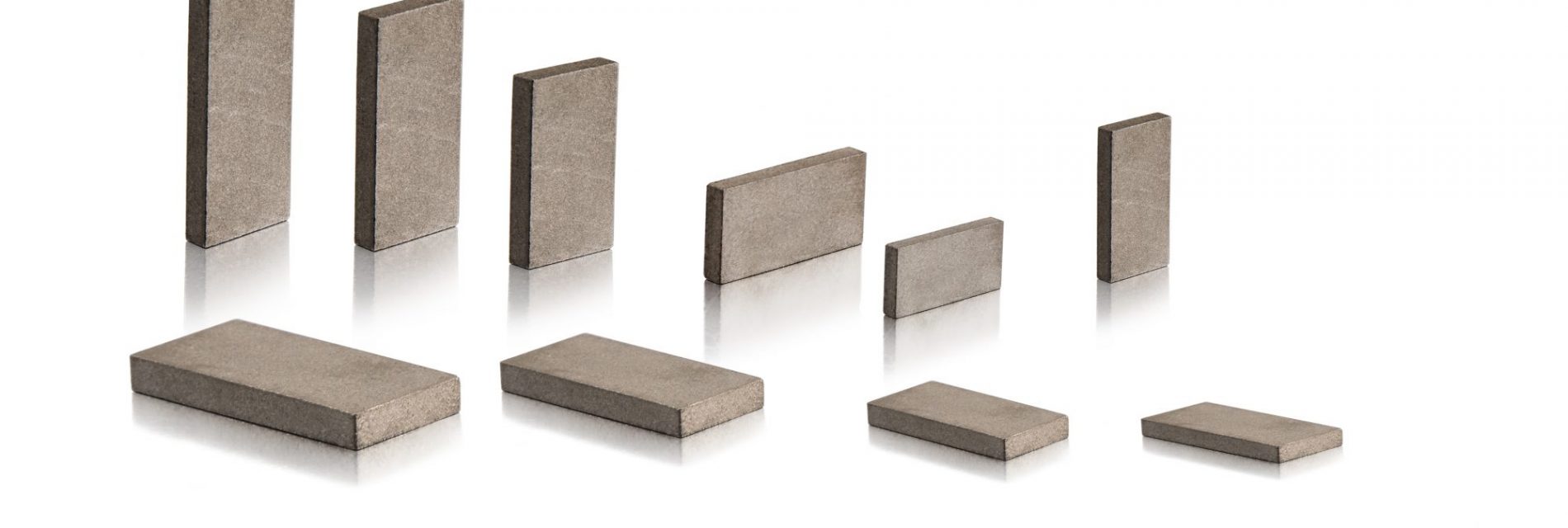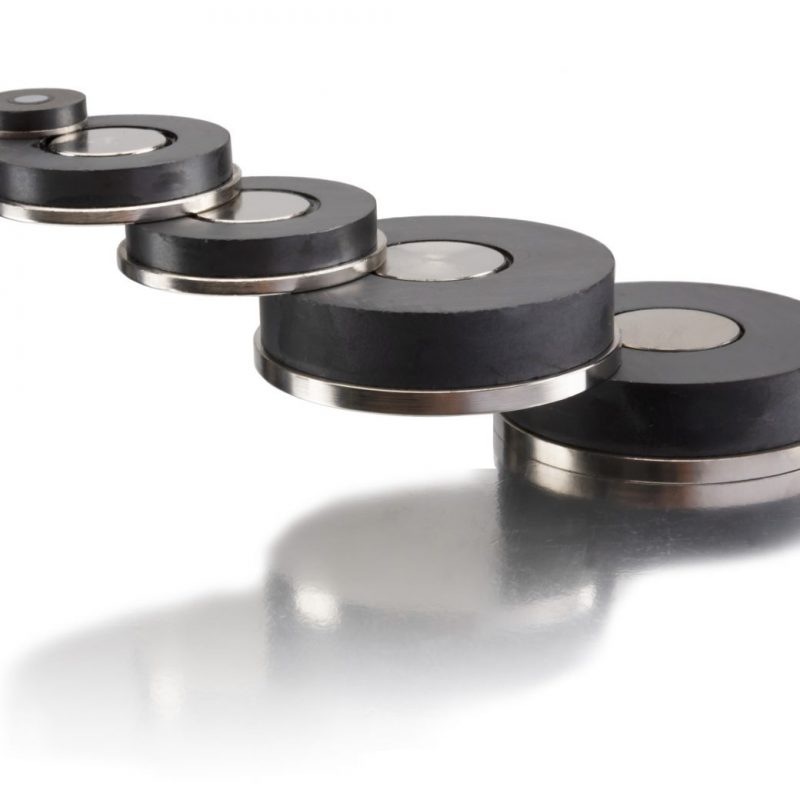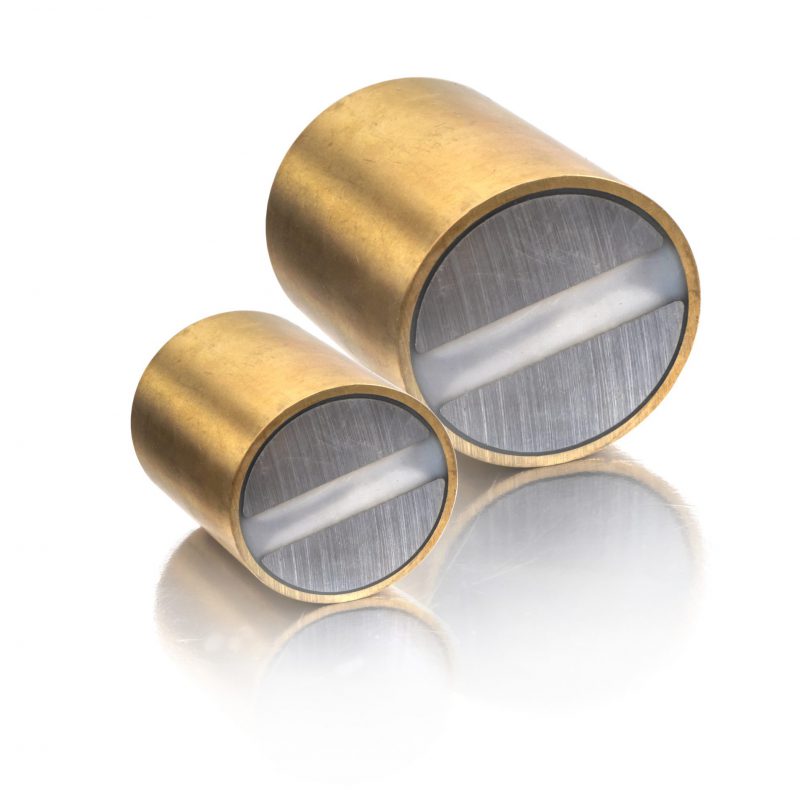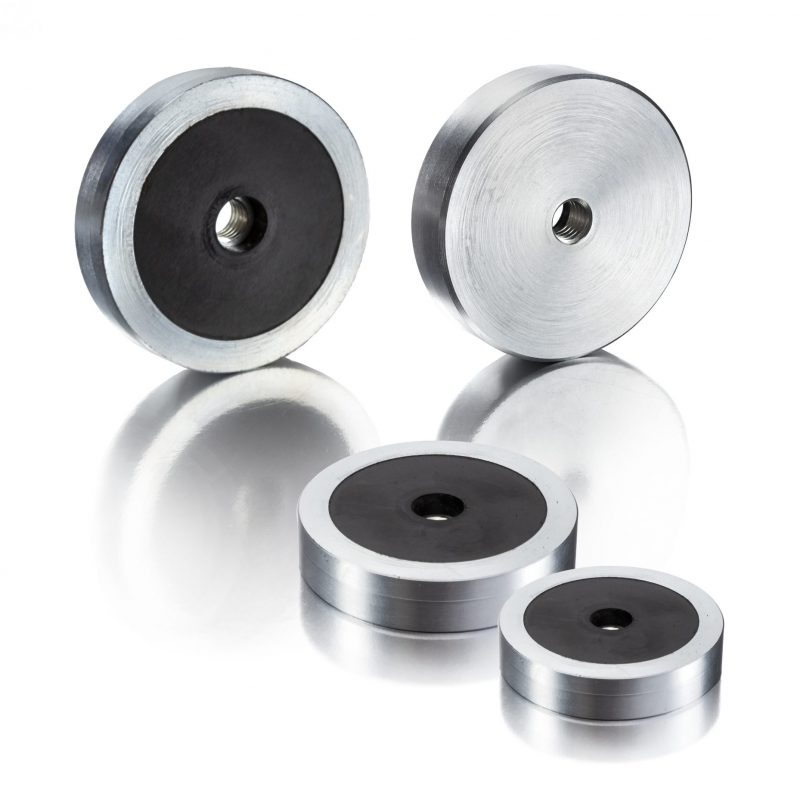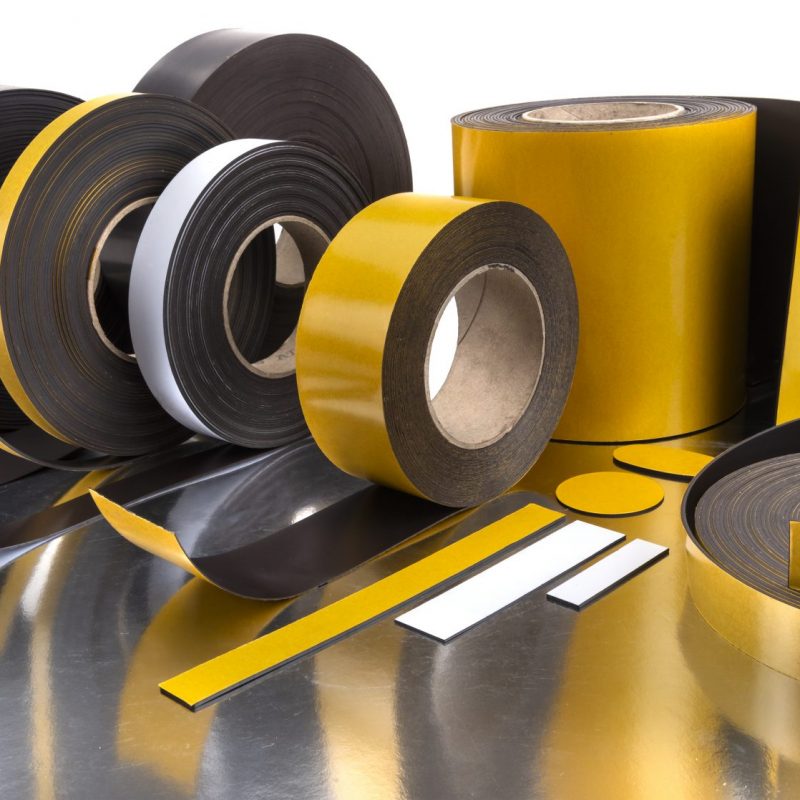Our materials
Alnico Magnets
- Mechanics: alloy whose main components are : Fe 50% – Co 24 to 38% – Ni 12 to 15%. Ni gives the bright colour and good resistance to oxidation.
- Average density: 7.3 – Hardness 50 to 55 Hrc (Rockwell) imposes machining by abrasion (grinding wheel) – Good resistance to compression without shocks.
- Magnetic: Br from 1.0 to 1.3 T – Hcb from 45 to 175 kA/m – BH from 32 to 75 Kj/m3
- Temperature coefficient from 0.01 to 0.03% / degree C
- Maximum operating temperature: 500°C
Alloy of iron, aluminium, nickel and cobalt.
There are two production methods.
A sintering process: the magnet is shaped by compacting the crushed alloy in a mould and then sintering at high temperature. A foundry process: the alloy is directly cast into moulds giving the magnet an appropriate shape.
Ferriflex magnets (Rubber magnet)
- Mechanics: brown colour
- Average density: 3.7 – ShoreD35 hardness – Very good flexibility
- Magnetic: Br from 0.220 to 0.255 T – Hcj from 191 to 240 kA/m – BH from 8.9 to 13 Kj/m3
- Temperature coefficient: -0.19% / degree C
- Maximum operating temperature: 100° depending on the grade
Ferriflex is a flexible material composed of ferrite powder associated with an elastomer binder. At Euromag, the binder is rubber.
The product is manufactured using the calandering technique. The initial preparation (90% ferrite and 10% binder) is mixed by grinding. A granulate is obtained, which falls between two cylinders that rotate in opposite directions, and a sheet is obtained by pressing. This 15 to 20 mm blank undergoes several passes until the final dimension is reached.
This operation makes it possible to set the thickness dimension but above all to create the anisotropy of the material.
Under the effect of the pressure, the elementary “strontium hexa-ferrite” hexagon particles, whose average diameter is 15 times the thickness, all orient themselves in the same direction. This is a cold mechanical orientation, whereas for all other magnetic materials this orientation is at high temperature. This material is therefore anisotropic, which means that it has a preferred direction of magnetisation, the thickness.
Neodymium Iron Boron
- Mechanical: on fracture, matt grey appearance (unlike Samarium, which is very brittle)
- Average density: 7.5
- Magnetic: Br from 1.03 to 1.4 T – Hcb from 796 to 1027 kA/m – BH from 199 to 398 Kj/m3
- Temperature coefficient: -0.12% / degree C
- Temperature range of use: from -60 to 2000C depending on the grade and the shape coefficient
Alloy of iron and rare earths from the Lanthanide family, i.e. Neodymium – Praseodymium – Dysprosium.
The production method is a combination of foundry and powder metallurgy.
During the pressing operation, the powdered alloy has the particularity of igniting on contact with oxygen. All these production steps are carried out in a neutral atmosphere until the sintering process. After sintering, the material does not ignite. It is not insensitive to oxygen or other aggressive gases. The free neodymiums on the surface oxidise (oxidation is a slow combustion), the material loses its components and falls back to the powder state.
This is why it is essential not to break the production line. As soon as the machining is complete, the magnets are placed in a neutral atmosphere until they are coated.
Ferrites magnets
- Mechanical: brown ceramic obtained by pressing powder in a tool under magnetic fields, sintering at 1100°, machining with diamond wheels.
- Average density: 4.8
- Magnetic: Br from 0.210 to 0.450 T – Hcb from 135 to 330 kA/m – BH from 6.5 to 38 Kj/m3
- Ideal material for DC electric motors used between -30° and +120°C
Ferrites are ferrimagnetic ceramics SrO(Fe2O3).
The method of production is a calcination of iron oxide and strontium carbonate under oxygen.
Shaping in a compression tool in which a paste made of water and very fine ferrite powder is injected. Drying and sintering at high temperature.
Samarium Cobalt magnets
- Mechanics: on fracture, very billiard coloured appearance
- Average density: 8.4
- Magnetic: Br from 0.7 to 1.1 T – Hcb from 600 to 780 kA/m – Hcj from 1100 to 2000 kA/m – BH from 142 to 230 Kj/m3
- Temperature decay is -0.035 to 0.05% / degree C
- Temperature range of use: from -60 to 350° depending on the grade and the form factor.
Alloy of iron and Rare Earth Samarium (Sm) and Cobalt (Co).
The method of production and the technique of powder metallurgy: grinding of the components, compression of the mixture in a cavity, under an intense magnetic field to create anisotropy, sintering for intergranular cohesion, and machining to give the final shape.
The machining is done with a grinding wheel on a universal machine or, for the machining of engine segments, on machines in a row with a form grinding wheel.

